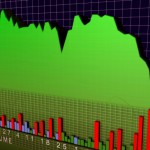 To me, buy-and-hold investing has been dead for decades, although there were temporary periods where it did well, as investment manager Barry Ritholtz explains in “Buy-and-Hold is dead; cash is king:”
To me, buy-and-hold investing has been dead for decades, although there were temporary periods where it did well, as investment manager Barry Ritholtz explains in “Buy-and-Hold is dead; cash is king:”
To a generation of investors raised to believe in the power of owning stocks for the long run, Barry Ritholtz has a characteristically blunt message: Buy-and-hold investing is dead.
The classic investing strategy that worked wonderfully through the 1980s and 1990s has been losing potency over the past decade, Ritholtz points out, but old beliefs die hard. Yet die they must — if an investor hopes to weather the current stormy market climate and even take advantage of it.
Ritholtz, an investment manager, is chief executive of FusionIQ, a quantitative research firm, and also runs a popular blog about markets and investing called The Big Picture. The way he sees it, stock investors need to bury the past — and quickly.
“The time for buy and hold is during a secular bull market, like from 1982 to 2000,” Ritholtz said. “When you’re in a secular bear market, which we are in, I think of investors’ jobs as managing risk and preserving capital.”
Indeed, the stock market’s action so far in August is unlike anyone on Wall Street has ever seen. In the five trading days through Friday, U.S. stocks were more volatile than at any time since November 1929, according to Standard & Poor’s.
“This is what happens to an economy that’s been surviving on government stimulus,” Ritholtz said. “Take that away, and the economy slows.”
A slower-than-expected economy means lower-than-expected corporate earnings and, accordingly, a repricing of stock valuations.
This is exactly the period we are going through as stock repricing has set in, which is nothing else but a fancy way of saying that we have slipped into bear market territory.
The past lost decade should have taught investors that buy-and-hold is a dead issue, especially as it has become clear that U.S. policies are on track to follow the path of Japan. Apparently nothing seems to have been learned from their lost 2 decades, during which buy and holders were annihilated, but those following trends in the market place managed to come out ahead.
Take a look at Preserving Assets and the chart of the Nikkei 225, which clearly shows the opportunities that lie in a market where multiyear rebounds are followed by multiyear losses. I envision that the domestic U.S. market may follow a similar pattern as time goes on. My recommendation is that you at least be prepared for this option by working with trends, trailing sell stops and a general exit strategy.
Simply buying and holding will expose you to unlimited losses, since we seem to have slipped into a market environment where the unthinkable appears to be possible. You have nothing to lose changing your investment philosophy by simply shifting into the safer mode of trend tracking.
I may not be 100% right with the idea of us following Japan’s footsteps. But what if I am?
Contact Ulli
Comments 3
Pingback: Buy and Hold is Dead | Index Trend Trading
Hi Ulli:
In regard to buy and hold, I agree with stocks, but how does that translate to us poor slobs wallowing in the mediocrity with the mutual funds de jour( for me American Funds)?
One has to rely on the fund managers NOT to follow the Dow or any other similar index “over the falls” as it were…but they do, and have anemic reasons like, ” you don’t want to miss the rebound or buying those dividend shares”. The buy low theory only works for those that buy and hold and are chumps not seeing the falls coming.
I’ve guessed right when I felt the signs were there when the Dow was about 12000 but jobs never returned, yet my advisor said wait…at 10800, I am sorry and likely to be sorrier if it plummets to 7000 like it could since with zero interest rates, no more “stimulus money” and no new jobs( meaning no expanding economy), where do you go?
So when do you dump your mutual funds into a money market account and preserve your capital to buy back in when the dust clears. An why are these fund managers so predictable?
Bill,
In regards to under performing funds, reevaluate them every quarter or so and drop those that are obvious laggards. If you use an exit strategy, such as I recommend, you don’t have to guess to see if the major indexes will be tanking or not. Use the trailing sell stops on ETFs/mutual funds (based on day ending prices), and you will always know when it’s time to exit. Since most investment managers do not use sell stops, you’ll be way ahead of the crowd.
Ulli…